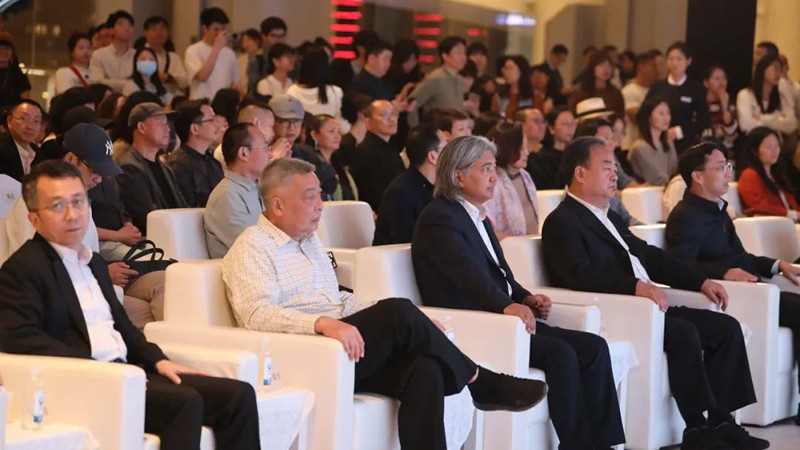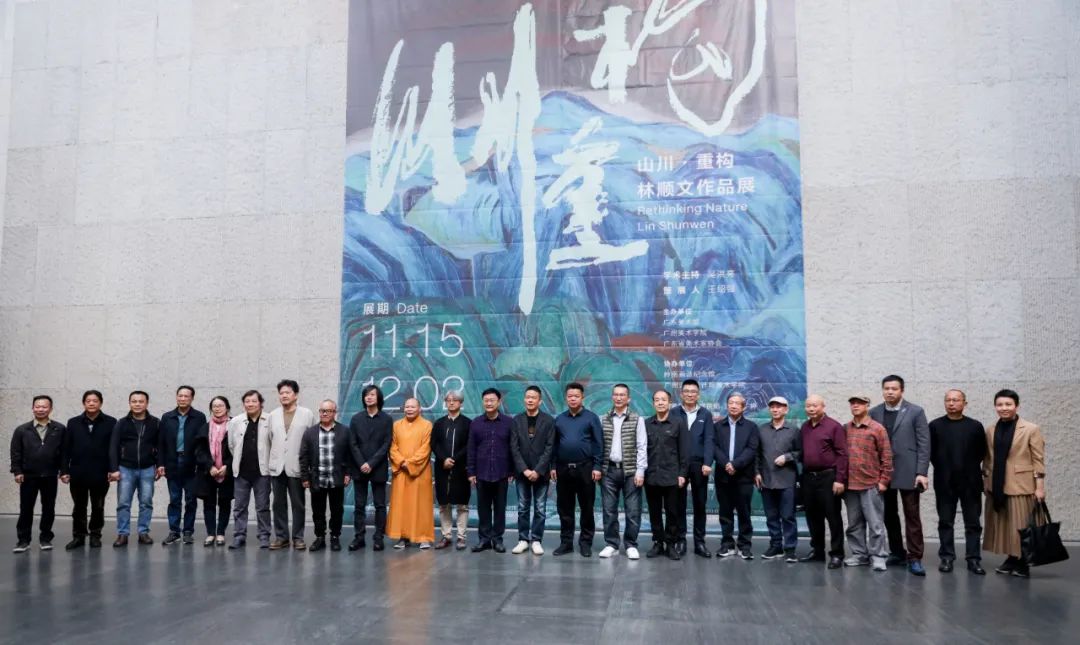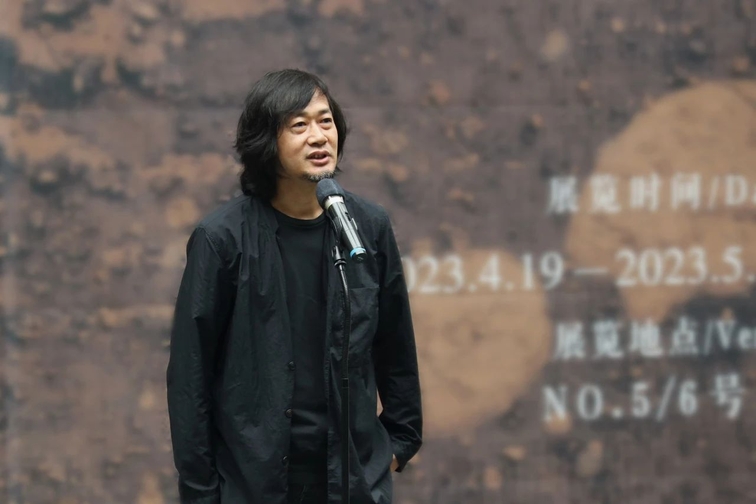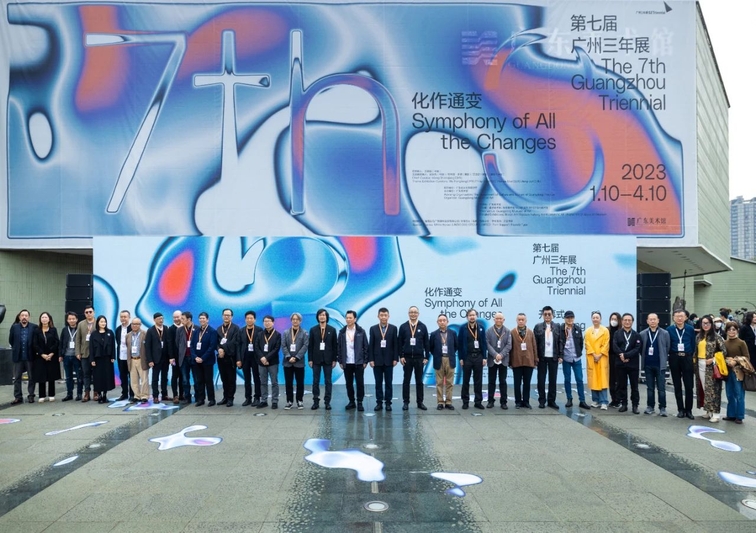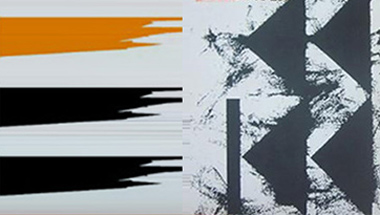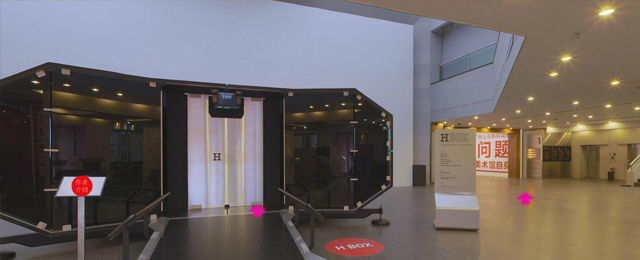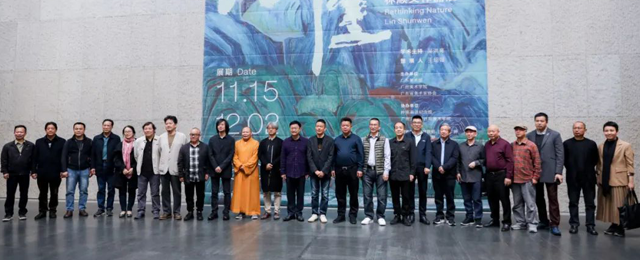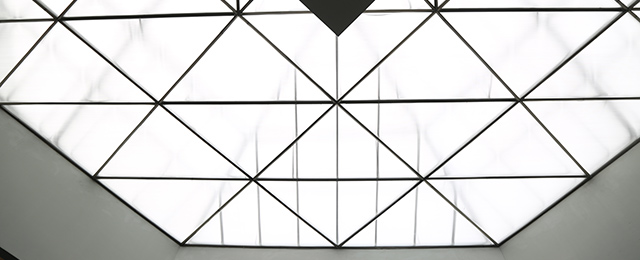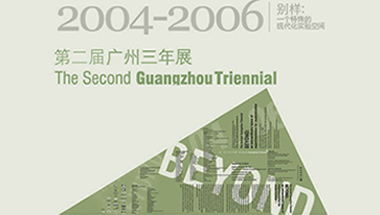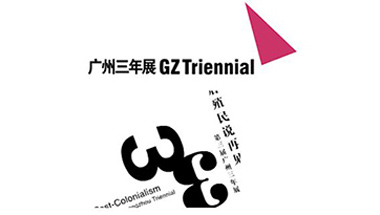历史的对弈与远望(张颂仁)(英文)
录入时间: 2007-01-18
Chess Matches and Vistas of History
Johnson Tsong-zung Chang
The Manipulating Hand of History
The metaphor of chess entered Xu Jiang's artistic language in 1988 when he was studying ln Hamburg as a guest student. Living in a foreign land alerted him to his own culture, circumstances which made China as alluring as a foreign destination. Seeking a strategy to engage this rediscovered mysterious sphere which promised (in his own words “authentic living,” Xu Jiang explored classical Chinese art and philosophy, and decided on the game of chess as his vehicle for exploring ideas relating to interaction and transformation, chance and destination.
For the past decade, Xu Jiang has experimented with his metaphor, creating first installation pieces and later mixed media paintings. His original intention was to enter a continuous critical dialogue with art through the inspiration of the concept of an open-ended game. He wanted the right to pose questions about the possibility of knowledge, with the assumption that both knowledge and life thrive on ceaseless contests of power. In accordance with this idea, the artist's earlier works resembled mock chess games, game rules determined the changing configuration of each installation, and the artwork itself was in fact the game in progress. It was not the most satisfying creative procedure, as it could not bring to bear the artist's full personality and creative power. The emphasis on process rather than outcome also meant the artist had no need to take a position on the critical dialogue he staged, and his detached position became less meaningful to Xu Jiang as he gradually focused on questions of history. Since 1994, he has concentrated on mixed media painting, linking the metaphor of chess with other symbols that evoke the passage of time and the ravages of power struggles.
"Chess Match of the Century" is a series of large oil paintings depicting panoramic views, some (such as "Siege No.3" and "Tunnel”) creating vortexes of whirling, collapsing space that suggest a tunnel of time. On every one of these works the artist has adhered relief plaster casts of his palm, fingers extended in the gesture of placing a chess piece. The vision is, without exception, one of desolation and ruin. Disintegration in the "Tunnel" painting is held back only by the momentum generated by speeding through the tunnel, with shards and splintering planks frozen in the path of an air storm. An apocalyptic end seems to wait at the other side, and it is the headlong plunge toward this end that gives all the broken pieces their rightful positions. The "Siege" and "Stone Monument" paintings depict still images of historical events which, in spite of their recent occurrence, suggest timeless ruins. Although they each show one specific scene at a silent moment, clearly the implication is of the greater theater of time and history upon whose stage action acquires its deeper significance.
The vision of Xu Jiang is heroic and dramatic. In its obsession with scenes of an epic proportion, human events seem doomed to tragic grandeur. The tone of Xu Jiang’s works is essentially elegiac, lamenting the inevitable failure of proud human enterprise. This pathos also reflects an acknowledgement of some form of historical teleology. The tunnel of time, the romance of grand archaeological ruins and the tight cohesive structure of the paintings’ pictorial space all hint at a constant force marching through history. The use of pictorial space also implies that the present moment (static space) is merely one of innumerable moments leading both backwards and forwards in time. Moving in either direction, whether to the past or to the future, the artist sees his landmarks to be grand ruins.
In spite of the image of ruins, faith in teleology implies that one can make sense of the vagaries of historical events. Instead of signs of destruction, ruins are significant as repositories of historical memory. In Xu Jiang's case, they function as memory of strife and failed ideals, rather than as monuments to victors. Perhaps the ruins should be seen in the light of the ideology of modernity, which celebrates the hubris of technological ingenuity, and eradicates the past by building over it; just as the consumer age attempts to make man forget his fragile temporality by showering him with replaceable goods. Xu Jang's ruins pay homage to buried moments, opening up the past like cracks in the seamless present. Xu Jiang's historical sensibility is informed by Germanic philosophy, and is influenced by contemporary artists such as Anselm Kiefer. Like Kiefer, this is the type of historical painting that should be seen against the tradition of historical victory monuments, artworks celebrating events of state and battles of decisive significance. Typical examples are Delacroix's "Liberty Leading the People," or the series of 18th century etchings commemorating "Emperor Qianlong's Twenty Victorious Battles." Their sweeping vision and heroic monumentality of scope find a similar sensibility in Xu Jiang, even though his world is bleak and overwhelmed by desolation. History for him is not a page to turn over, but weighs upon the present like the physical layering of his paintings, and the richness of past civilizations is suggested by the accumulation of so much more debris.
The present moment also interferes physically in these paintings in the form of plaster hands (or as shoes in his 1994 series). They crawl over the pictorial surface like menacing spirits from a bad dream. Dripping with slime, faceless and mutilated, their literal physicality intrudes like the insertion of harsh present moments into a historical meditation, rudely interrupting its grand narrative. As hands, they suggest manipulation and control; and as dismembered hands the association extends to punishment and clawing ancient spirits. The tidy symbolism of the chess game loses its cerebral detachment, and gets mired in the battleground of history, drawing in both manipulator and the manipulated.
Xu Jiang’s meditation on the contest of power and human destiny presents a disheartening view of teleology. He seems to question the wisdom of chance and petty power struggle, since his visual imagination is dominated by desolation and destruction. He also appears resigned to the fact that dynamic forces drive the world along, and stability (and perhaps wisdom) may only be sought in the abandoned sites of old conflicts, even though these are still haunted by the manipulating hands of power. The manner in which Xu Jiang initially set up the“Chess”series, as an open field of contending dynamics for drawing forth spontaneous responses, suggests that his dark ruminations on history and power are also personal strategies for engaging the inevitability of fate. That he draws forth a coherent vision again and again shows that Xu Jiang has excavated an authentic, though dark, voice from within. These “Chess”paintings seem to intimate further storms ahead. The whirlpool of future histories promises to pull in still more historical debris, and the menacing hands of fortune continue to prod blindly. Perhaps the hope of civilization rests with its ruins: monuments to failed ideologies, reminders of strife, and a guiding light for those in a position to play the game.
Vision, Vista and Viewing
Since the early 1990s, the metaphor of viewing has been central to Xu Jiang’s paintings. Sweeping vistas of history and grand moments of human conflict constitute the subject of his “Chess Match of the Century,” a series that spans a period of ten years, from 1989 to 1999. From the “Chess Match” series Xu went on to the equally monumental “Vistas of History.” The artist’s epic imagination foments visions of a comparably epic scale, which formulate into expansive vistas of architectural ruins: still images of a history silenced by the shock of its own ravages, or calmed by the healing muse of time.
Sites depicted in Xu’s paintings include the Yuan Ming Yuan Garden (retreat of the Empress Dowager, razed to the ground by a European joint army in 1860), Berlin’s Brandenburg Gate and the Bund of Shanghai. In Xu’s art these vistas have been turned into sites of historical memory, and connotations of “ruin” transport them to a realm beyond the reach of time, where they become both a repository of culture and a burden of history. As public memory, they have devolved into ineluctable shadows in our collective heart, beyond the glittering reach of material wealth and glory. For the artist the task of surveying such broad vistas is dependent on locating a suitable angle of perception, so as to determine the markers that indicate distance and depth. What is brought into view thus serves as both symbol and guide-post; these markers are lined up along a continuous axis so that within the scope of the view they also constitute a vision of history, an ideology of time.
The grave historical gaze is not the only form of viewing that interests Xu Jiang. The act of looking out, leaning against a balustrade, and being moved by the surrounding view is closer to the spirit of his work of recent years. Gazing out into the distance he also sees the breadth and depth of his own soul; being moved by the view he comes to appreciate the nurturing genius of Nature. This change in vision in his recent paintings reflects a development in the artist’s spiritual outlook; it shows him gradually released from the blinkered grip of a teleological history, to open up to the surprises of life and to the possibility of new beginnings. This development is rooted in a spiritual maturity, as well as in a growing humility that comes about through cultivation and refinement in the connoisseurship of art. Xu Jiang’s recent exercises in “looking out” are also interrupted by moments of inspecting up close; the reversals back and forth in the focus thus refine the artist’s viewings into a record of his openness to life.
In the period between the “Chess Match of the Century” series and the later “Vista With Sunflowers” the artist’s manner of viewing underwent another sea-change. In paintings from the first series, urban scenes such as those seen in “Suzhou Creek,” “Shanghai Bund,” and “Bridge” appear as arrested apparitions, caught by surprise in a sudden, concentrated flash of light. The architectural elements are represented in a state of flux, as though experiencing a dramatic transition in the cosmic order, so that the forms are splintered apart like atomic particles, or like the scattering of light from a reflecting lens. Post-war Berlin is depicted as being held up by a scaffolding of frames, like a precariously propped-up ruin. Nanjing Road in Shanghai is composed of a splintering of light, like a distant memory ignited by a comet. Yuan Ming Yuan Garden is set upon by darkness, and its flickering presence amidst the shadows is as mysterious as glowing embers. In general, whether these scenes represent testaments to the past or contemporary cities viewed as future ruins, they have been fixed as landmarks of history under the sudden flashes of inspiration that bring them to life. What is presented to us are in fact visions of history that have been “visualised,” that have come to determine our imagination of the past and present age.
This manner of imagining history has a blood relationship with the tradition of European Romanticism, which takes a tragic-heroic view of the passage of eras, and seeks to illuminate the timeless darkness of chaos with an idealistic vision of history. Thus, looking down the corridor of time, each guide-post that marks the distance is a marker of time, leading to a grand historical vista. Xu Jiang’s paintings “Tunnel” (1996), depicting a whirlwind tunnel of time-space into which images are sucked and fragmented, and “Bridge” (2003), which uses the device of a rapidly repeating rhythm impelled by a seemingly irresistible momentum, there is the implication of space-time moving forward in one direction on a singular track, doomed by a destiny not to be refuted. The sites of history visualised by the eye of imagination appear as apparitions illuminated by a brief blaze of light: and there is the implication that, after the blaze is extinguished, they will remain only as images to be mourned and remembered. Ultimately these sites vanish, like the “Great Wall” (2001), which disappears in the desert like a series of explosions; or like the sacred symbol of the Chinese cultural lineage, the “Forbidden City” (1999), represented as a hail of brinestones that light up a momentary brilliance. Historical memory is selective, and apart from such grand symbolic sites of reference, living beings and countless sensitivities and situations will not find their way into historical memory. Instead they will be left out of the visual imagination of history, unlit by the few brilliant fireworks that flash across time, and cast into the shadows of insignificance.
Xu Jiang’s gaze upon history shifts present scenes into the past tense, so that the Huangpu Bridge and Suzhou Creek beyond the Shanghai Bund both assume the tragic grandeur of ruins. Here, the artist takes a reverse look at the present from the vantage point of the future, and the view today becomes history. The fact that what is present can become history, indeed ruins even, suggest that history with a long view is getting out of fashion; it is rapidly being consumed. The gradual depositing of historical memory is being robbed by glamorous visions of the future. Then again, fantasies of the future are also being rapidly overtaken by new virtual imaging technology, which claim even better control over our imaginary world. In addition there is in China today the excessive pursuit of building construction projects; they cover mercilessly over the tracks of the past with concrete architecture, robbing us of our memory, hence the possibility of alternative futures that might have risen from unique origins.
As Xu Jiang painted his large oil paintings he also created a huge quantity of watercolour sketches. These drawings constitute independent groups of work, and they quietly point towards alternative cultural ruminations. “Heaven and Earth” looks at the ground ahead and at power lines that define the sky; “Wall” studies the walls surrounding Venice’s Arsenale and ruins of the ancient city wall of Beijing; “Reed Marsh” describes clusters of reeds in different seasons; “Vista With Sunflowers” depicts the blossoming and decay of sunflower fields; the recent “Water Tunes” inspects rippling reflections in street gutters. The several examples cited above are all works in ink and wash, each created in a series of multiple pieces sometimes several dozen in number; yet they represent just a small part of the artist’s output, underscoring his dedication to this working process. As shown above, in these works the painter’s concern is mainly the subtle variations in the shifting light or the changing seasons, depicting life in cyclical time. They do not depart from the artist’s usual philosophical seriousness--there is, for example, the reflection on the historical density of city walls, and the life and death of plants--but they have struggled free of the eschatological trap, the historical destiny, that ensnares both “Chess Match of the Century” and “Vista in History,” so that the world comes alive and creatures are blessed by the bounteous gifts of heaven and earth.
In these groups of ink-and-colour drawings life is more forgiving; there is more time and space so that the walls, the reeds and the sunflowers have room to ruminate and grow. And among each group of works a different world unfolds. There is no direct causal relationship between the drawings in each group: rather, each is self-sufficient. The painter’s approach to lighting significantly departs from the sudden dramatic flash of the large oil paintings; instead, a natural light embraces the scenery. As to the forms of objects and plants, they are not presented as moments culled from memory, and the structures are shown not in a process of decomposition, but rather are revealed as objective existences carefully studied and represented. Time-space has been opened up and set free of historical destiny, so that humble life on earth may regain its autonomy and dignity.
“Vista with Sunflowers,” a group of drawings that Xu Jiang has also developed into large oil paintings, shows sunflower fields in different seasons. Like the drawings of reeds, the “Sunflower” series of works take a special interest in the fate of collective life and changes of fortune that come with the changing seasons. The sunflowers are obviously biomorphic, and fields of this plant bring to mind life in the years of collectivist politics. However, here, collective life is not moved along by the force of history, nor by human policy, but by the regenerative power of heaven and earth. The sunflowers exist outside the machinery of history, and life is reassuring, in that decay is not just an irreversible journey to extinction, but also a path to renewal. The cycle of life and regeneration has given this vista a vision broader than history; from here the artist looks beyond historical eschatology to find a sympathetic appreciation of collective life.
The alternative to gazing out into the distance is to inspect up close. In painting, this means making life studies. Through his ink sketching Xu Jiang has returned to the root of the act of viewing; his drawings of broad vistas take in sceneries and full segments of the visible world, while his drawings of close-up views study the intimacy of light and movement. To view historical distance is to focus on the vision of ideology, and to see the ambitious plans for the future; it is therefore a way of viewing fraught with anxiety and burdened with emotions about human deeds of the past. Studying scenes up close takes the tangible and the intimate as subject, and delights in curiosity about real life. This kind of life study requires the artist to rein in his ambitions, and tolerate the apparent tedium of the ordinary. In some of Xu Jiang’s stylistically milder drawings one sees the artist cultivating a new sensitivity: subtler, with greater hidden complexity, showing the development of the artist’s cultivation. With these drawings he looks at the world about him and finds beauty and humanity at every turn, whether it is the sympathy with collective fate in “Vista With Sunflowers”, a sudden awareness of the proximity of heaven in “Heaven and Earth”, or the beauty in transient images in “Water Tunes.” This sensitivity should be viewed in a perspective neither too far nor too near, neither too rushed nor too languid. It is a perspective that attunes itself with the rhythm of the seasons and the life cycle of the cosmos.
From the storms of historical vision to the more clement climes of seasonal
life, Xu Jiang has adopted a wide range of perspectives and focal points to
survey issues that concern him; and they take him from broad cultural topics to
issues of personal cultivation. As the ancients said, the gentleman should be
inspired to poetry when ascending a mountain: to be inspired when viewing a
landscape is therefore at the heart of the spirit of poetry. The artist has
turned his gaze, his surveys and his inspection of the world into art, at the
same time clearly demonstrating that, echoing the ancient gentlemen’s mountain
walks, for him all these ways of viewing are just excursions along the way for a
mind poised to take flight into poetry.
开放时间:每周二至周日9:00-17:00(逢周一闭馆)
每日16:30停止入场
地址:广东省广州市越秀区二沙岛烟雨路38号
咨询电话:020-87351468
预约观展:
-
近日,“目光如织:法兰西艺术院中法院士艺术特展”开幕式在广东美术馆新馆举行。 ...

